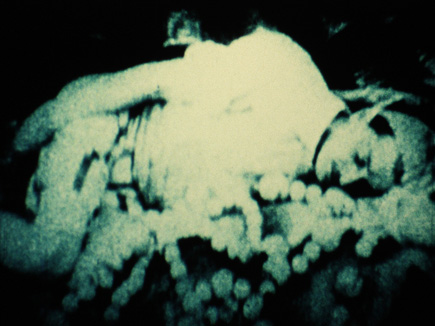Phil Solomon: Programme 1
Phil Solomon: Programme 1
London Tate Modern, Monday 24 October 2011, at 7pm
Phil Solomon, The Exquisite Hour
1989/94, 16mm, colour, sound, 14 min
“… Partly a lullaby for the dying, partly a lament of the death of cinema … [it] is dedicated to the memory of my grandparents, Albert Solomon, who was a projectionist for Fox, and Rose Solomon, who took tickets at Lowe’s Paradise in the Bronx.” (Phil Solomon)
Phil Solomon, The Snowman
1995, 16mm, colour, sound, 8 min
“A meditation on memory, burial and decay – a belated kaddish for my father.” (Phil Solomon)
Phil Solomon, Clepsydra
1992, 16mm, b/w, silent, 15 min
“Solomon has evolved his technique so that in his latest work (‘Clepsydra’ – ‘waterclock’) the textures are constantly changing and are often appropriate to each figure in metaphoric interplay with each figure’s gestural (symbolic) movement. He has, thus, created consonance with thought as destroyer/creator – a Kali-like aesthetic ‘There is a light at the end of the tunnel’ (Romantic); and it is a train coming straight at us: … (and, to balance such, perhaps, with a touch of Zen) … it is beautiful!” (Stan Brakhage)
Phil Solomon, Psalm III: “Night of the Meek”
2002, 16mm, b/w, sound, 23 min
“It is Berlin, November 9, 1938, and, as the night air is shattered throughout the city, the Rabbi of Prague is summoned from a dark slumber, called upon once again to invoke the magic letters from the Great Book that will bring his creature made from earth back to life, in the hour of need. A kindertodenliede in black and silver on a night of gods and monsters.” (Phil Solomon)
Phil Solomon, Rehearsals for Retirement
2007, video, colour, sound, 10 min
“Had I known the end would end in laughter / I tell my daughter it doesn’t matter.” (Phil Ochs)


